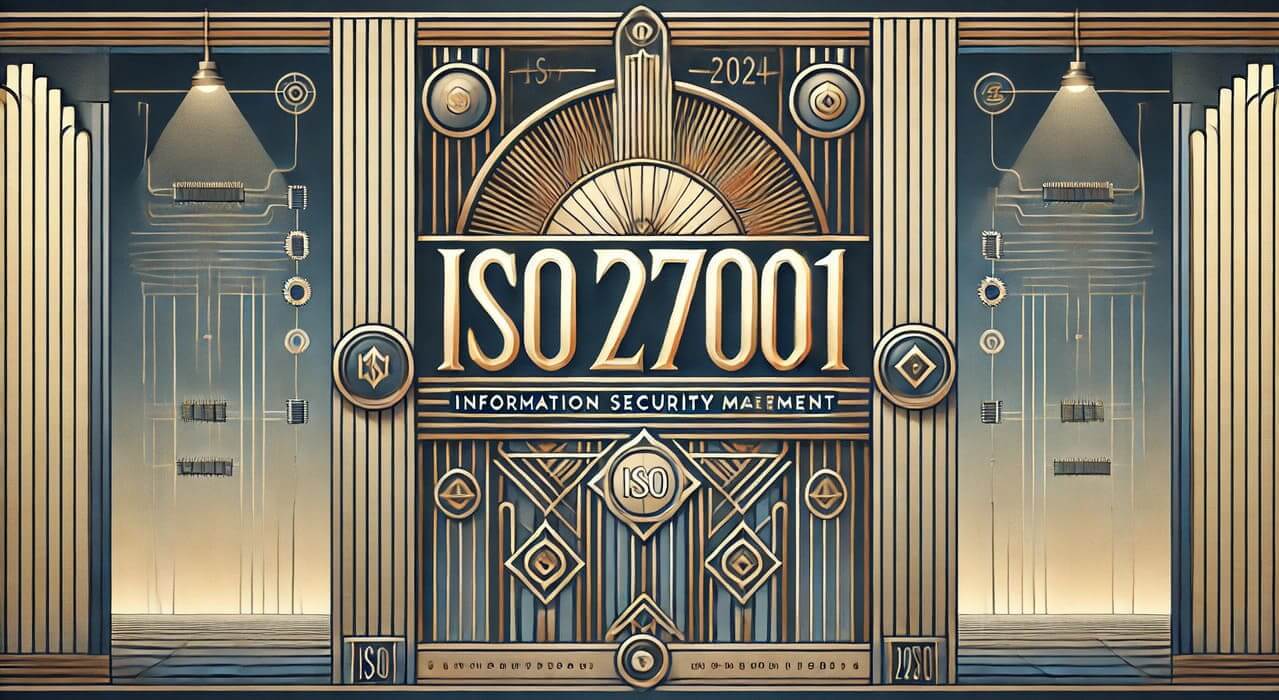ISO 27001 is an internationally recognized framework that helps organizations establish, implement, maintain, and continually improve an Information Security Management System (ISMS). It focuses on preserving the confidentiality, integrity, and availability of information by applying risk management processes. Below is a chapter-by-chapter overview intended for IT and information security teams who need a clear, structured grasp of ISO 27001’s core requirements.
Chapter 1: Scope
Defines the overall purpose and boundaries of the standard. ISO 27001 applies to any organization, regardless of size, type, or nature, provided it seeks to protect information through a management system of well-defined processes and controls.
Key Takeaways
- Any business handling valuable information—whether a tech startup or a multinational firm—can benefit from adhering to ISO 27001.
- Excluding any requirements in Clauses 4 to 10 is not an option if your organization claims full conformity.
Chapter 2: Normative References
Points to ISO/IEC 27000, which provides foundational vocabulary and concepts for implementing an ISMS.
Key Takeaways
- Familiarize yourself with ISO/IEC 27000’s terminology. It underpins consistent communication and alignment across any ISO 27001-based project.
Chapter 3: Terms and Definitions
Explains core definitions for terms such as “risk,” “information security,” “confidentiality,” “integrity,” and “availability.”
Key Takeaways
- Standardized definitions help teams avoid confusion when implementing or auditing the ISMS.
- Understanding these terms is crucial for correct interpretation of controls and requirements.
Chapter 4: Context of the Organization
- Understanding Your Context (Arts. 4.1–4.2): Clarifies that organizations must consider both internal and external factors, along with the needs and expectations of all relevant “interested parties,” such as customers, regulators, and suppliers.
- Scope Determination (Art. 4.3): Defines which parts of the organization and which processes are covered by the ISMS.
- Information Security Management System (Art. 4.4): Requires establishing, maintaining, and continually improving the ISMS.
Key Takeaways
- Before diving into specific controls, identify the organization’s unique risk profile, objectives, and boundaries.
- Scope definition is critical—whether you’re focusing on one department or the entire enterprise.
Chapter 5: Leadership
- Leadership and Commitment (Art. 5.1): Top management must show active involvement, allocate resources, and champion the ISMS.
- Policy (Art. 5.2): Requires an information security policy that is documented, communicated, and reflects management’s commitment.
- Roles, Responsibilities, Authorities (Art. 5.3): Clear assignments within the ISMS ensure accountability.
Key Takeaways
- Executive support is non-negotiable for a successful ISMS.
- A clearly articulated policy guides employees and stakeholders on the organization’s security posture.
Chapter 6: Planning
- Actions to Address Risks and Opportunities (Art. 6.1)
- Risk Assessment (Art. 6.1.2): Identify, analyze, and evaluate potential threats to confidentiality, integrity, and availability.
- Risk Treatment (Art. 6.1.3): Select appropriate controls to address identified risks and produce a Statement of Applicability.
- Information Security Objectives (Art. 6.2)
- Defines measurable goals aligned with the overall policy and business strategy.
Key Takeaways
- A robust risk management process is the heart of ISO 27001.
- Treat planning as iterative—risks and opportunities evolve with business changes.
Chapter 7: Support
- Resources (Art. 7.1): The organization must ensure adequate funding and tools.
- Competence (Art. 7.2): Personnel must be qualified or trained for their security responsibilities.
- Awareness (Art. 7.3): Everyone in the organization needs to understand the importance of the ISMS.
- Communication (Art. 7.4): Outlines how the organization disseminates relevant information internally and externally.
- Documented Information (Arts. 7.5.1–7.5.3): Emphasizes proper control, versioning, and security of documentation.
Key Takeaways
- Training and awareness are critical to compliance—technology alone cannot uphold security.
- Proper document and record management ensures consistent procedures and clear audit trails.
Chapter 8: Operation
- Operational Planning and Control (Art. 8.1): Requires documented processes and careful change management.
- Risk Assessment (Art. 8.2): Continues the risk evaluation cycle, ensuring alignment with business and technical changes.
- Risk Treatment (Art. 8.3): Implements controls, measures progress, and ensures ongoing alignment with the ISMS scope.
Key Takeaways
- Operations turn plans into day-to-day practices—keep these procedures well-documented and consistently followed.
- Integrate ISMS operations with other business processes for efficiency and better compliance.
Chapter 9: Performance Evaluation
- Monitoring and Measurement (Art. 9.1): Establishes how organizations track the effectiveness of controls.
- Internal Audit (Arts. 9.2.1–9.2.2): Regularly audits the ISMS to ensure compliance and continuous improvement.
- Management Review (Arts. 9.3.1–9.3.3): Top management reviews performance data, risk statuses, and improvement opportunities.
Key Takeaways
- Develop key performance indicators (KPIs) around security incidents, nonconformities, and near-misses.
- Internal audits reveal gaps that feed into management reviews, fostering a cycle of continual improvement.
Chapter 10: Improvement
- Continual Improvement (Art. 10.1): ISO 27001 is not a one-time project but an evolving process that adapts to new threats and business directions.
- Nonconformity and Corrective Action (Art. 10.2): Requires a structured approach to identifying the root causes of any deviation and preventing recurrence.
Key Takeaways
- Encourage a security-aware culture that treats mistakes as learning opportunities.
- Use lessons from incidents and audits to refine policies, controls, and training.
Annex A: Information Security Controls Reference
Lists a comprehensive set of controls derived from ISO/IEC 27002. Organizations tailor these controls based on risk assessments, selecting or excluding each one with justification in the Statement of Applicability.
Key Takeaways
- Annex A is not exhaustive but serves as a starting library of standardized controls.
- Regularly revisit these controls to ensure they remain effective and appropriate for your changing risk landscape.
Final Thoughts
ISO 27001 provides a structured, risk-based approach to safeguarding information, requiring top-level commitment, continuous oversight, and active adaptation to emerging threats. For IT and infosec teams, adhering to these guidelines not only mitigates risk but also demonstrates compliance to stakeholders and regulators worldwide. By understanding each clause—context, leadership, planning, support, operations, evaluation, and improvement—organizations can methodically build and maintain an ISMS that stands the test of rapid technological change.


